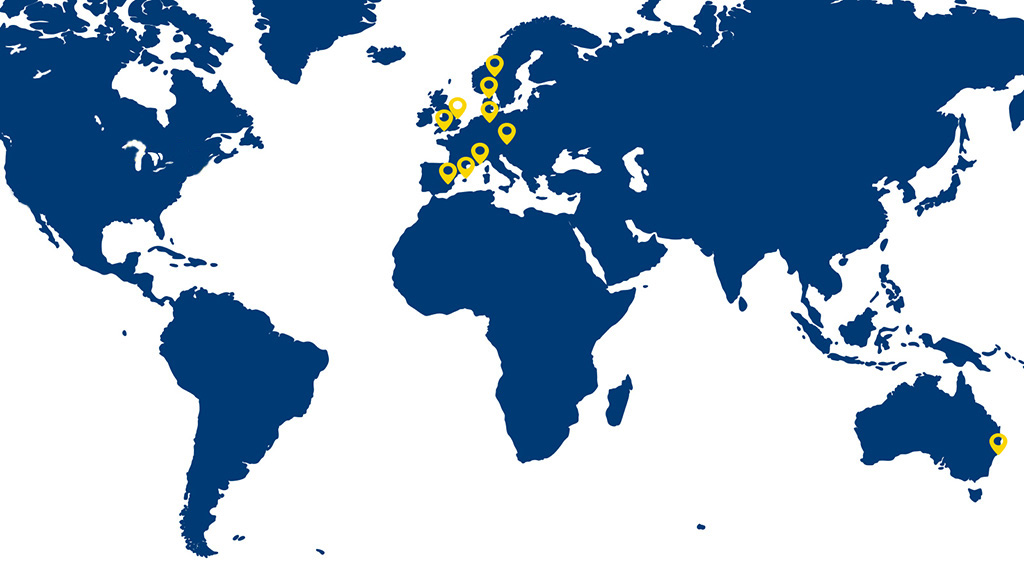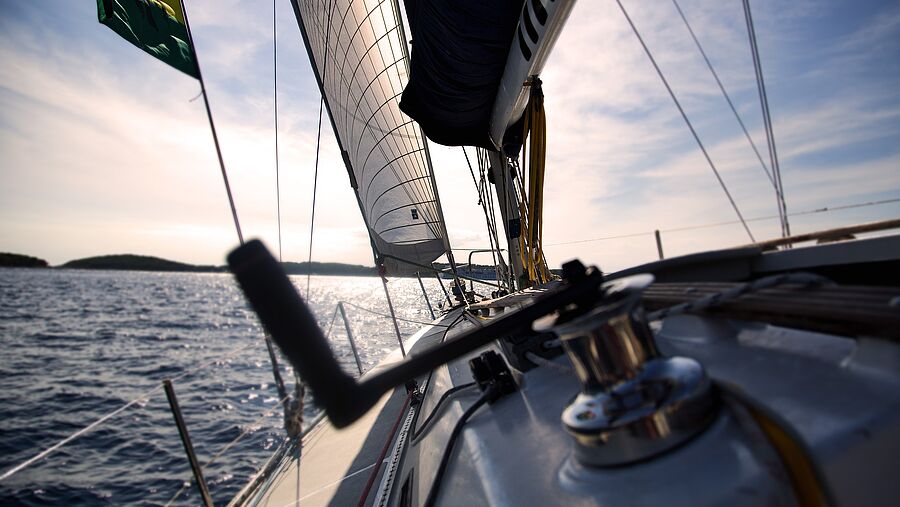Understanding VHF Radios
The most popular way of communicating at sea is via a marine VHF (Very High Frequency) radio. These combined transmitter/receiver sets operate on allocated frequencies known as 'channels,' and are used for a variety of purposes, including contacting harbours, marinas, locks, summoning rescue services, and ship-to-shore or ship-to-ship communication.
To prevent interference with other radio users, a section of the radio spectrum is allocated specifically for marine communications. The VHF marine radio band remains consistent worldwide, ensuring that vessels on international voyages can always communicate. Channel 16 (156.800 MHz) is the international calling and distress channel, making it the most critical frequency for safety at sea.
Choosing the Right VHF Radio
When buying a VHF radio, consider these features:
- Long-lasting Power: Opt for a rechargeable battery pack that offers 10 to 15 hours of operation on a full charge.
- Battery Life Indicator: Stay informed about your power levels.
- Selectable Transmit Power: Switch between 5 watts for emergencies and 1 watt for standard communication to conserve battery life.
- Night Vision Ready: A lighted display for clear reading during night-time.
- Weather Alerts: Ensure your radio can receive Met Office weather channels and storm warnings.
- Push-To-Talk: Simple activation for transmission.
- Noise Control: A squelch feature to filter out unwanted static.
- Backup Power: An auxiliary, non-rechargeable battery pack for extended voyages.
Handheld vs Fixed VHF Radios
Handheld VHF Radios: Handheld VHF radios share many features with their fixed counterparts, with the added advantages of portability, usefulness in emergencies, and independence from the vessel's power and antenna. They are ideal for small vessels without their own battery source, as emergency backups for fixed radios, or as additional radios for crew use. However, their range and battery life are typically less than that of fixed radios, with power levels usually ranging from 1 to 6 watts.
Fixed or Panel-Mount VHF Radios: Fixed-mount marine VHF radios offer greater power and range, typically with selectable power settings of 5 watts and 25 watts. These radios come with DSC (Digital Selective Calling) capabilities, which allow you to alert other boats, ships, and shore stations at the press of a button. Additional features may include position polling, group calling options, automated fog horns, and built-in hailer systems. However, they require proper installation, including connection to a power source, VHF antenna, and GPS antenna.
The Importance of Registration and Connection
In the UK, maritime safety has been enhanced by Digital Selective Calling (DSC) technology, integrated into the Maritime and Coastguard Agency's (MCA) search and rescue system. However, your DSC radio must be connected to your boat's GPS, and you need to register your unique Maritime Mobile Service Identity (MMSI) number. This registration is crucial, as without it, the Coastguard may struggle to locate you in an emergency. Register your VHF radio through Ofcom's online service—it’s quick, easy, and free. If you sell your vessel, remember to cancel your MMSI number for the new owner.
Why VHF Radios Outshine Mobile Phones on the Water
While smartphones have become ubiquitous, relying on them for maritime emergencies is risky. Here’s why a VHF radio is essential:
- Wide Reach: VHF calls can be heard by the Coast Guard and nearby vessels, increasing the chances of a quick response. Mobile phone calls only connect to a single recipient.
- Expert Assistance: A VHF call connects you directly with Coast Guard professionals, who can dispatch help within minutes.
- Reliable Signal: VHF radios offer a robust signal range of up to 30 miles, far surpassing the spotty coverage of mobile networks at sea.
- Precise Location Tracking: VHF radios can instantly provide a line of bearing, making it easier for rescuers to locate you.
- Durability and Battery Life: Designed for marine environments, VHF radios are more reliable than mobile phones, which can easily be damaged by water.
- Weather Warnings: VHF radios broadcast crucial storm warnings and other maritime alerts on Channel 16.
Understanding Radio Range and Power
Many boaters are curious about the range of their VHF radios. Radio waves travel in straight lines, like light, meaning range is often described as 'line of sight.' The higher the radio antenna is mounted, the further it can 'see' and communicate. Fixed radios typically have more power (up to 25 watts), allowing for greater range compared to handhelds. However, it's important to use the lowest power setting necessary to conserve battery life.
Beyond VHF range, which generally maxes out between 35 and 50 miles offshore due to the curvature of the earth, HF (SSB) radio may be required for longer distances.
Licensing and Operation
All radios require both the user and the vessel to hold relevant licences. The vessel's licence, akin to a car tax disc, is also the key to obtaining an MMSI number. Users need a radio 'driving licence,' with two types available:
Short Range Certificate (SRC): This one-day course covers VHF radio operation, DSC functions, and emergency procedures.
Long Range Certificate (LRC): For other communications like HF and Satcom, this course takes 3-4 days and covers advanced procedures.

